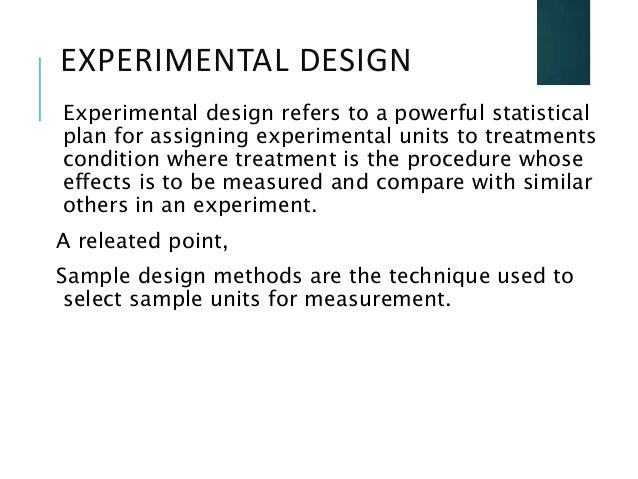
In a within-subjects design (also known as a repeated measures design), every individual receives each of the experimental treatments consecutively, and their responses to each treatment are measured. Sometimes randomisation isn’t practical or ethical, so researchers create partially-random or even non-random designs. An experimental design where treatments aren’t randomly assigned is called a quasi-experimental design. Often you may do several experiments of both types to test a particular hypothesis.
About this book
For instance, applying this design method to the cholesterol-level study, the three types of exercise program (treatment) would be randomly assigned to the experimental units (patients). Only when this is done is it possible to certify with high probability that the reason for the differences in the outcome variables are caused by the different conditions. Therefore, researchers should choose the experimental design over other design types whenever possible. However, the nature of the independent variable does not always allow for manipulation. In those cases, researchers must be aware of not certifying about causal attribution when their design doesn't allow for it.
Advantage of Within-Subjects Designs
Proper study design ensures the production of reliable, accurate data. In a within-subjects design, each participant experiences all conditions, and researchers test the same participants repeatedly for differences between conditions. The key difference between observational studies and experiments is that, done correctly, an observational study will never influence the responses or behaviours of participants. Experimental designs will have a treatment condition applied to at least a portion of participants.
2 Factors
Second, you may need to choose how finely to vary your independent variable. Sometimes this choice is made for you by your experimental system, but often you will need to decide, and this will affect how much you can infer from your results. The study of the design of experiments is an important topic in metascience.

In general, blocking is used in order to enable comparisons among the treatments to be made within blocks of homogeneous experimental units. The independent variable of a study often has many levels or different groups. Thus, when everything else except for one intervention is held constant, researchers can certify with some certainty that this one element is what caused the observed change.
Save book to Google Drive
An example would be if you want to have a full-time student who is male, takes only night classes, has a full-time job, and has children in one treatment group, then you need to have the same type of student getting the other treatment. This type of design is hard to implement since you don’t know how many differentiations you would use, and should be avoided. This is how to actually design an experiment or a survey so that they are statistical sound.
This can be used to reduce the complexity of the data and identify patterns in the data. Video recording involves recording participants’ behavior or interactions using cameras or other recording equipment. This method can be used to capture detailed information about participants’ behavior or to analyze social interactions.
Cluster analysis is used to group similar cases or observations together based on similarities or differences in their characteristics. This method involves observing and recording the behavior or phenomenon of interest in real time. It may involve the use of structured or unstructured observation, and may be conducted in a laboratory or naturalistic setting. Professional organizations, like the American Statistical Association, clearly define expectations for researchers.
Aplication of the statistical experimental design to optimize mine-impacted water (MIW) remediation using shrimp-shell - ScienceDirect.com
Aplication of the statistical experimental design to optimize mine-impacted water (MIW) remediation using shrimp-shell.
Posted: Wed, 27 Dec 2017 08:13:18 GMT [source]
Unfortunately, they did not know very much about statistical analysis, and they simply trusted that he was collecting and reporting data properly. All this means is that we wish to determine the effect an independent explanatory variable has on a dependent response variable. An observational study is one in which investigators merely measure variables of interest without influencing the subjects.
Identify the explanatory variable (independent variable), response variable (dependent variable), and include the experimental units. In order to be a between-subjects design there must be a separate group of subjects for each combination of the levels of the independent variables. Main concerns in experimental design include the establishment of validity, reliability, and replicability. For example, these concerns can be partially addressed by carefully choosing the independent variable, reducing the risk of measurement error, and ensuring that the documentation of the method is sufficiently detailed. Related concerns include achieving appropriate levels of statistical power and sensitivity.
Some variables, like temperature, can be objectively measured with scientific instruments. Others may need to be operationalised to turn them into measurable observations. The variance of the estimate X1 of θ1 is σ2 if we use the first experiment. But if we use the second experiment, the variance of the estimate given above is σ2/8.
No comments:
Post a Comment